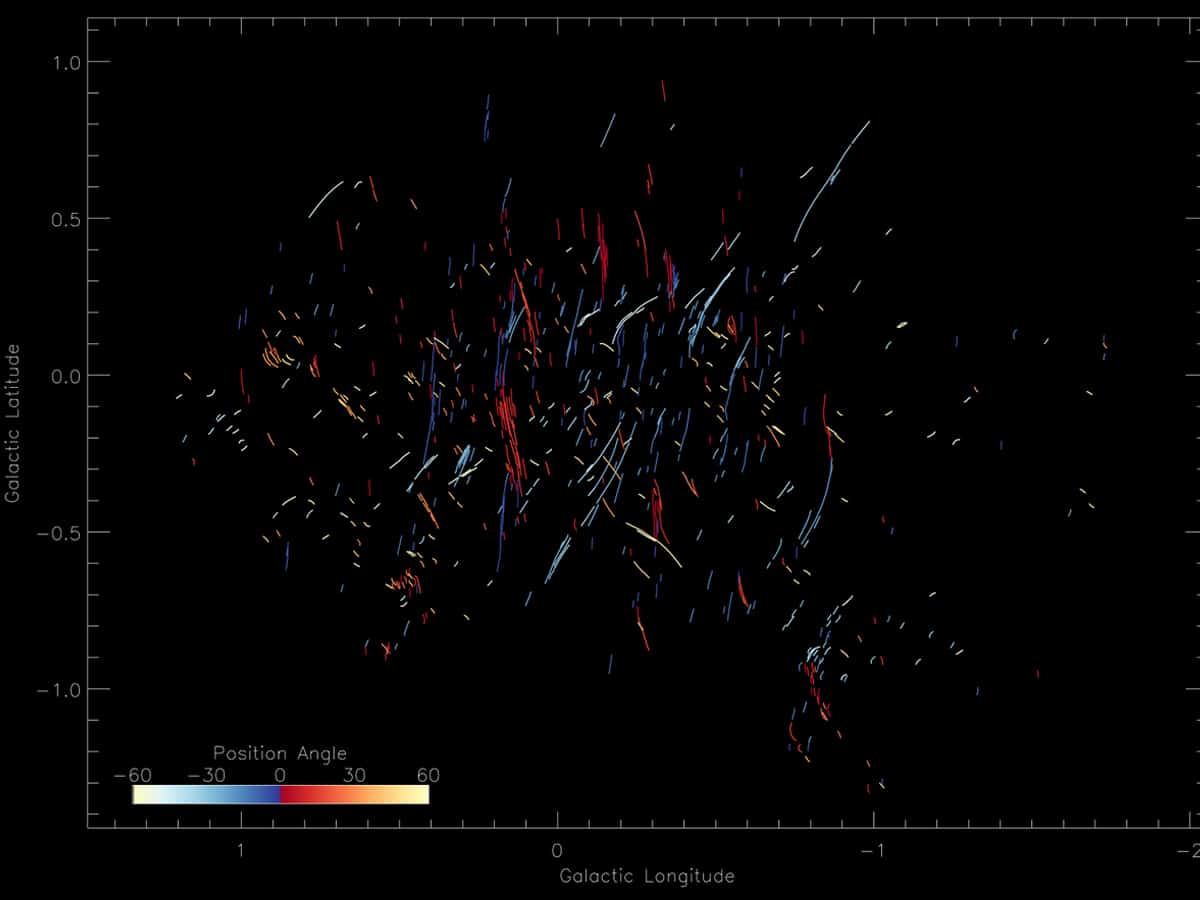
New York: A team of astrophysicists has discovered a new type of cosmic threads hidden in the centre of the Milky Way galaxy.
In the early 1980s, a radio astronomy expert in Farhad Yusef-Zadeh at Northwestern University discovered gigantic, one-dimensional filaments dangling vertically near Sagittarius A*, our galaxy’s central supermassive black hole.
Now, Yusef-Zadeh and his collaborators have discovered a new population of filaments — but these threads are much shorter and lie horizontally or radially, spreading out like spokes on a wheel from the black hole.
Although the two populations of filaments share several similarities, Yusef-Zadeh assumes they have different origins.A
While the vertical filaments sweep through the galaxy, towering up to 150 light-years high, the horizontal filaments look more like the dots and dashes of Morse code, punctuating only one side of Sagittarius A*.
The findings are detailed in The Astrophysical Journal Letters.
“It was a surprise to suddenly find a new population of structures that seem to be pointing in the direction of the black hole,” said Yusef-Zadeh, Professor of Physics and Astronomy at Northwestern’s Weinberg College of Arts and Sciences.
“By studying them, we could learn more about the black hole’s spin and accretion disk orientation. It is satisfying when one finds order in the middle of a chaotic field of the nucleus of our galaxy,” he added.
To pinpoint the filaments, Yusef-Zadeh’s team used a technique to remove the background and smooth the noise from MeerKAT images in order to isolate the filaments from surrounding structures.
MeerKAT, originally the Karoo Array Telescope, is a radio telescope consisting of 64 antennas in the Meerkat National Park, in the Northern Cape of South Africa.
After studying the vertical filaments for decades, Yusef-Zadeh was shocked to uncover their horizontal counterparts, which he estimates are about 6 million years old.
While both populations comprise one-dimensional filaments that can be viewed with radio waves and appear to be tied to activities in the galactic centre, the similarities end there.
The vertical filaments are perpendicular to the galactic plane; the horizontal filaments are parallel to the plane but point radially toward the centre of the galaxy where the black hole lies.
The vertical filaments are magnetic and relativistic; the horizontal filaments appear to emit thermal radiation.
The vertical filaments encompass particles moving at speeds near the speed of light; the horizontal filaments appear to accelerate thermal material in a molecular cloud.
There are several hundred vertical filaments and just a few hundred horizontal filaments. And the vertical filaments, which measure up to 150 light-years high, far surpass the size of the horizontal filaments, which measure just 5 to 10 light-years in length.
The vertical filaments also adorn space around the nucleus of the galaxy; the horizontal filaments appear to spread out to only one side, pointing toward the black hole.



